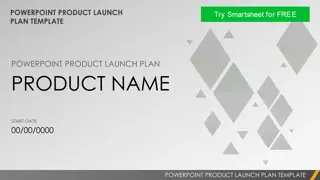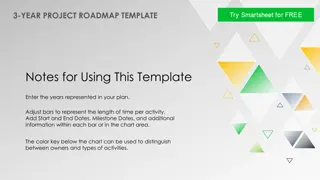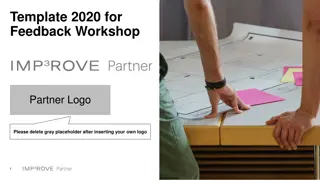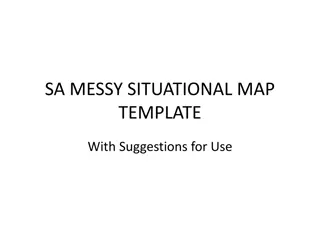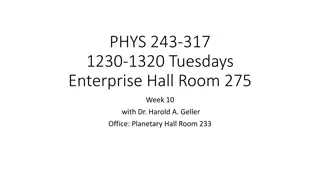
Enabling Safe Cross-Border Radioactive Waste Treatment Facilities and Services for Sustainable Development
Learn about supporting safe sustainability through cross-border radioactive waste treatment services, addressing challenges, and contributing to UN SDGs with harmonized practices and regulations in waste management and decommissioning.
Download Presentation

Please find below an Image/Link to download the presentation.
The content on the website is provided AS IS for your information and personal use only. It may not be sold, licensed, or shared on other websites without obtaining consent from the author. If you encounter any issues during the download, it is possible that the publisher has removed the file from their server.
You are allowed to download the files provided on this website for personal or commercial use, subject to the condition that they are used lawfully. All files are the property of their respective owners.
The content on the website is provided AS IS for your information and personal use only. It may not be sold, licensed, or shared on other websites without obtaining consent from the author.
E N D
Presentation Transcript
Supporting safe sustainability, through enabling cross border radioactive waste treatment facilities and services David Oxberry Studsvik Limited
Contents Context HARPERS Contributing to the UN SDG s Example: Contribution to the UN SDG s Practical Approaches & Feedback Future Conclusion
UN Sustainability Development Goals (SDGs) Safe Management of Radioactive Waste and Environmental Protection contribute to the Sustainability of the Nuclear Industry. In turn this contributes to the UN SDG s. Clear relationship between safety and sustainability and its understanding, development, communication and exploitation will drive the continued engagement in Nuclear. Sounds easy .
Challenges Alignment of Actors (Inc. Governments, Regulators, Waste Owners, Industry, Academia, Public) and Actions. Ability, Aspiration, Requirement, Willingness to engage in discussions and developments. Motivation to action or make changes - we have always done it this way. Need for a common understanding, approach, vision? Sounding a little trickier now .
Is there a simple fix? No. But . There are things we can do. Understanding Openness/Transparency Alignment Engagement Shared approaches Top down vs Bottom up approach etc
Example: Contribution to the UN SDG s
What is HARPERS? Title: Harmonised Best Practices, Regulations and Standards in Waste Management and Decommissioning Response to the Euratom call: Towards harmonised application of the international regulatory framework in waste mangement and decomissioning Project Funded from Euratom Research and Training Programme 2021-27 (Grant Agrement No 10160028) 2,4M EC 0,9M NO/UK/JRC 26 partners, 13 countries
Overall Goals and Objectives Identify the obstacles & issues preventing implementation of a more common regulatory approach, covering e.g. nuclear, industrial safety, occupational health, environmental, aspects. Establish & clarify the benefits & added value of aligned practices and methodologies in decommissioning and RWM. Realisation of the aims of the project will contribute to enhance the overall safety & economics of the nuclear sector.
How to Address: Work Package 3
WP3 - Cross Border Services and Facilities for Radioactive Waste Management Aim: To identify the most important needs and challenges for Cross Border Services/Facilities for radioactive waste management activities across Europe. Need: Decreasing the fragmentation of the market and optimization of opportunities to manage and treat radioactive waste across borders. Also contributes to cross-European mobility, shared facilities, acceptance of advanced technologies and encourage implementation of circular economy principles. Overview of Approach: The successful implementation of the project has thus far required: (i) Effective engagement of a stakeholder (inc. regulators, WMO s, Service providers and society) (ii) Clear and transparent criteria for setting the prioritization of topics that are evaluated (iii) Willingness of regulatory bodies to engage and share their feedback on current practices (iv) A consortium with a broad range of expertise.
What have we done? Bottom up approach to begin with (consortium inc. Industry, Waste Owners, Industry, Academia): Driver for applying for the project. Clear need that we can improve what we do and how we do it? Explore the improvements that could come from Harmonising approaches to waste management Project Activities: Identify and engage with Stakeholders to understand their drivers and expectations Analysis of current and relevant data sources Identify any gaps! Exchange data, information, experiences on Radioactive Waste Treatment and Services Development of Needs / Challenges to support the aim Re-engage with Stakeholders and Actors Refine the Needs / Challenges through webinars, open questioning, feedback, Prioritization Process Regularly Report progress! Produce specific actions to take forward and address
Example: Topic Prioritization Process A quantified process was undertaken to prioritize the topics: 1. Workshops outputs captured, analysed and data weighted/normalised. 2. Three challenges, derived from the stakeholder workshops, were used to further refine each of the topics to reach a final importance weight factor: 1. Regulatory 2. Economical (cost/benefit) 3. Societal (public trust and confidence, stakeholder issues) 3. The final weighted value was compiled from the sum of each challenge multiplied with the weight of that topic.
Where is WP3 up to now? Categorisation of the Needs / Challenges covering 4 main topic areas: Best Practice, Harmonisation, Technical Challenges, Geological Disposal Facility (GDF) / Waste Storage Facilities 3 Needs / Challenges being taken forward: 1. To align wastes with treatment technologies in a manner acceptable to all stakeholders 2. Harmonization of Individual EU and international countries problematic waste inventory 3. Member States approach to dealing with radioactive contaminated hazardous waste differs Selected topics will be studied in more detail by performing deeper engagement with stakeholders and to further evaluate issues associated with the topics. Outcome: A series of position papers (based on task data and the detailed feedback from the stakeholders) including a series of recommendations using the TECOP (technical, economical, commercial, organizational and political) approach.
Lessons Learnt so far Define a clear goal for the actions .and ensure your actions support the achievement of the goal! Build from a strong knowledge base, but don t be afraid to bring in other experts Stakeholders can be happy to engage, but be focused with the request for help/advice Define a common understanding and terminology for the project EU/International Working can differ Discuss how and why activities are done in countries, once you scratch the surface of the topic, you can see that change can be challenging! Compare understanding, approaches, reasoning etc across Member States Don t be afraid to ask!
Practical Approaches Our Euratom funded project gathers together actors/organisations from Industry, Academia, Regulators, Social sciences etc Detailed reports covering topics, rationales on the selection process adopted for topics to be taken into the next stages of the project etc are publicly available: www.harpers-h2020.eu Why would we not take advantage of the information and data from the project to support our understanding, development and fostering of the relationship between safety and sustainability?
Conclusion Initiate and Assist: Project is relevant to the nuclear industry s embracement of sustainability especially as there is a growing need for more efficient predisposal waste management services is increasing. Adjustments resulting from the project can accelerate business offerings and confidence, while reducing conflict and litigations. Consider How to Address: Under WP3, the three topics that are being investigated further will support and develop the relationship between safety and sustainability. To support the achievement of the UN SDG s, we need to demonstrate that challenges in nuclear waste management can be overcome through delivery feedback and engagement across all the actors. Identify Practical Approaches: A consolidated and underpinned approach to identifying needs and challenges has so far demonstrated what is important to Stakeholders and is shaping the development of further topics in WP3. The capturing, publishing and incorporation learning will support the growing momentum for coordinated actions across the Europe, which in turn will being to assisting in realizing the UN SDG s.
Thanks to the EC and our Partners Project Funded from Euratom Research and Training Programme 2021-27 (Grant Agrement No 10160028)



